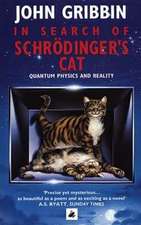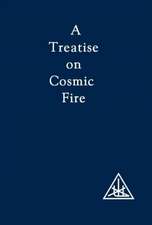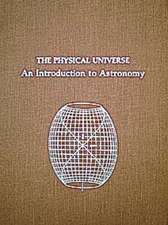The Big Splat, or How Our Moon Came to Be
Autor Dana MacKenzieen Limba Engleză Hardback – 10 apr 2003
Dana Mackenzie (Santa Cruz, CA) is a freelance science journalist. His articles have appeared in such magazines as Science, Discover, American Scientist, The Sciences, and New Scientist.
Preț: 195.54 lei
Nou
Puncte Express: 293
Preț estimativ în valută:
37.42€ • 39.16$ • 31.14£
37.42€ • 39.16$ • 31.14£
Carte disponibilă
Livrare economică 10-24 martie
Preluare comenzi: 021 569.72.76
Specificații
ISBN-13: 9780471150572
ISBN-10: 0471150576
Pagini: 240
Dimensiuni: 161 x 237 x 22 mm
Greutate: 0.49 kg
Editura: Wiley (TP)
Locul publicării:Hoboken, United States
ISBN-10: 0471150576
Pagini: 240
Dimensiuni: 161 x 237 x 22 mm
Greutate: 0.49 kg
Editura: Wiley (TP)
Locul publicării:Hoboken, United States
Public țintă
The main audience here is astronomy buffs (particularly moon watchers), from hobbyists and natural museum–goers to readers of books like Timothy Ferris′ Seeing in the Dark and Andrew Chaikin′s Man on the Moon. The science discussed is at the Discover magazine level.Descriere
GENESIS REVISED "It takes a certain amount of courage to step beyond one′s day–to–day experiments and look at the big picture?and the origin of the Moon is a ′big picture′ question par excellence. Perhaps it makes sense that William Hartmann, one of the two scientists who unraveled the Moon?s biggest mystery, is not only a scientist but also a part–time artist and science fiction writer. It took someone with an artist?s eye and a fiction writer?s speculative temperament to see the big picture.
"This is a book about that big picture: the origin of the Moon, as interpreted by Hartmann and Alastair Cameron, the second patriarch of The Big Splat. It is also about a doomed planet called Theia, and a familiar one called Earth that used to look vastly different from today?s Earth. But, most of all, it is about a long lineage of intellectual voyagers who began exploring the Moon long before Neil Armstrong planted his boot into the lunar dust."
From the Introduction
"This is a book about that big picture: the origin of the Moon, as interpreted by Hartmann and Alastair Cameron, the second patriarch of The Big Splat. It is also about a doomed planet called Theia, and a familiar one called Earth that used to look vastly different from today?s Earth. But, most of all, it is about a long lineage of intellectual voyagers who began exploring the Moon long before Neil Armstrong planted his boot into the lunar dust."
From the Introduction
Textul de pe ultima copertă
GENESIS REVISED "It takes a certain amount of courage to step beyond one′s day–to–day experiments and look at the big picture?and the origin of the Moon is a ′big picture′ question par excellence. Perhaps it makes sense that William Hartmann, one of the two scientists who unraveled the Moon?s biggest mystery, is not only a scientist but also a part–time artist and science fiction writer. It took someone with an artist?s eye and a fiction writer?s speculative temperament to see the big picture.
"This is a book about that big picture: the origin of the Moon, as interpreted by Hartmann and Alastair Cameron, the second patriarch of The Big Splat. It is also about a doomed planet called Theia, and a familiar one called Earth that used to look vastly different from today?s Earth. But, most of all, it is about a long lineage of intellectual voyagers who began exploring the Moon long before Neil Armstrong planted his boot into the lunar dust."
From the Introduction
"This is a book about that big picture: the origin of the Moon, as interpreted by Hartmann and Alastair Cameron, the second patriarch of The Big Splat. It is also about a doomed planet called Theia, and a familiar one called Earth that used to look vastly different from today?s Earth. But, most of all, it is about a long lineage of intellectual voyagers who began exploring the Moon long before Neil Armstrong planted his boot into the lunar dust."
From the Introduction
Cuprins
Introduction: Genesis Revised. 1. A Highly Practical Stone.
2. The Stone Star.
3. Kepler Laughed.
4. The Clockwork Solar System.
5. Daughter Moon.
6. Captive Moon.
7. Sister Moon.
8. Renaissance and Controversy.
9. A Little Science on the Moon .
10. When Worlds Collide.
11. The Kona Consensus.
12. Introducing Theia.
Appendix: Did We Really Go to the Moon?
Glossary.
References.
Acknowledgments.
Index.
2. The Stone Star.
3. Kepler Laughed.
4. The Clockwork Solar System.
5. Daughter Moon.
6. Captive Moon.
7. Sister Moon.
8. Renaissance and Controversy.
9. A Little Science on the Moon .
10. When Worlds Collide.
11. The Kona Consensus.
12. Introducing Theia.
Appendix: Did We Really Go to the Moon?
Glossary.
References.
Acknowledgments.
Index.
Recenzii
"...Dana Mackenzie?reveals the truth..." (The Mail on Sunday, 30 March 2003) "...this is a most useful and interesting book..." (New Scientist, 7 June 2003)
"A most useful and interesting book." (Patrick Moore in New Scientist)
"...an absorbing and informative account of the quest to explain the genesis of the moon..." (Astronomy & Space, June 2003)
"...fascinating! For everyone with even the slightest interest in astronomy?an insightful and entertaining read..." (M2 Best Books, 14 July 2003)
"Besides telling an interesting tale well and elucidating how science progresses, Mackenzie′s book emphasizes the fact that impacts have been the primary creative and destructive process throughout the history of the Solar System." (NATURE)
"The Big Splat is a superb exploration of an important chapter in the history of Earth and its satellite. Every Moon–buff will want a copy." (Astronomy)
"...a comprehensive travelogue of lunar nativities throughout history..." (Astronomy Now, March 2004)
??Dana Mackenzie?reveals the truth??(The Mail on Sunday, 30 March 2003) "...this is a most useful and interesting book?? (New Scientist, 7 June 2003)
"A most useful and interesting book."(Patrick Moore in New Scientist )
??an absorbing and informative account of the quest to explain the genesis of the moon?? (Astronomy & Space, June 2003)
??fascinating! For everyone with even the slightest interest in astronomy?an insightful and entertaining read?? (M2 Best Books, 14 July 2003)
"Besides telling an interesting tale well and elucidating how science progresses, Mackenzie′s book emphasizes the fact that impacts have been the primary creative and destructive process throughout the history of the Solar System." (NATURE )
"The Big Splat is a superb exploration of an important chapter in the history of Earth and its satellite. Every Moon–buff will want a copy." (Astronomy)
"...a comprehensive travelogue of lunar nativities throughout history..." (Astronomy Now, March 2004)
"A most useful and interesting book." (Patrick Moore in New Scientist)
"...an absorbing and informative account of the quest to explain the genesis of the moon..." (Astronomy & Space, June 2003)
"...fascinating! For everyone with even the slightest interest in astronomy?an insightful and entertaining read..." (M2 Best Books, 14 July 2003)
"Besides telling an interesting tale well and elucidating how science progresses, Mackenzie′s book emphasizes the fact that impacts have been the primary creative and destructive process throughout the history of the Solar System." (NATURE)
"The Big Splat is a superb exploration of an important chapter in the history of Earth and its satellite. Every Moon–buff will want a copy." (Astronomy)
"...a comprehensive travelogue of lunar nativities throughout history..." (Astronomy Now, March 2004)
??Dana Mackenzie?reveals the truth??(The Mail on Sunday, 30 March 2003) "...this is a most useful and interesting book?? (New Scientist, 7 June 2003)
"A most useful and interesting book."(Patrick Moore in New Scientist )
??an absorbing and informative account of the quest to explain the genesis of the moon?? (Astronomy & Space, June 2003)
??fascinating! For everyone with even the slightest interest in astronomy?an insightful and entertaining read?? (M2 Best Books, 14 July 2003)
"Besides telling an interesting tale well and elucidating how science progresses, Mackenzie′s book emphasizes the fact that impacts have been the primary creative and destructive process throughout the history of the Solar System." (NATURE )
"The Big Splat is a superb exploration of an important chapter in the history of Earth and its satellite. Every Moon–buff will want a copy." (Astronomy)
"...a comprehensive travelogue of lunar nativities throughout history..." (Astronomy Now, March 2004)
Notă biografică
DANA MACKENZIE holds a doctorate in mathematics from Princeton University. After teaching mathematics at Duke University and Kenyon College for more than a decade, in 1997 he completed the Science Communication Program at the University of California at Santa Cruz. Since then he has been a freelance science writer, with articles appearing in such magazines as Science, Discover, American Scientist, Astronomy, and New Scientist. He lives in Santa Cruz with his wife as well as three cats and a dog.















